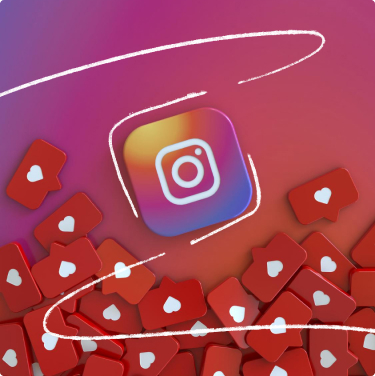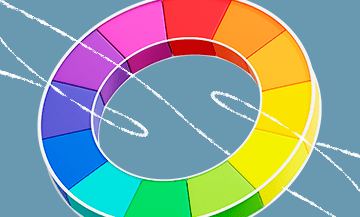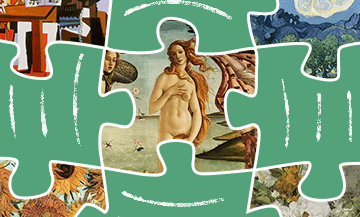In the world of contemporary art, an artist’s talent is only half the success. One of the key questions facing an artist is: how to effectively find clients and make a name for oneself in the world?
For example, to ensure a buyer for your paintings in Germany, it has long been unnecessary to know the German language and travel to Berlin. You can simply register in an online gallery and send your paintings to a satisfied customer by mail.
However, the question arises: how to choose from the many available sales channels the one that will provide a stable income?
In this article, we will look at several options for how artists can successfully monetize their art: from custom paintings to selling ready-made works and freelancing.
Ways to earn money for artists
Commissioned Paintings
One of the popular ways for artists to earn money is by creating commissioned paintings. Various themes and styles allow creators to find clients in a wide range of fields.
From portraits to abstractions, every customer will find something to their taste. You can use online platforms like Etsy or Instagram to receive orders and expand your client base.
Selling Finished Paintings
Creating your own online store where an artist can offer their finished works or even turn artworks into unique items such as postcards or printed pillows. This is not only a way to earn money but also an option to attract a new audience that appreciates original art objects.
Freelance Work
Freelance platforms like Upwork or Fiverr have already won over many artists. Here you can sell your illustrations, logo designs, or artworks for various projects. A flexible schedule and a wide client base make freelancing an attractive choice for many creative individuals.
Employment
For artists who prefer stability, consider employment. Many companies and studios are looking for talented artists to join their staff.
An artist in a company engages in content creation, develops animations, and specializes in graphic design. Working in a team is always an attractive option for those who value a collaborative atmosphere and steady projects.


Top offline methods of finding clients for an artist
So where to find clients?
Exhibitions
When you have accumulated several dozen finished paintings, it is time to think about exhibitions. Of course, you can participate in group exhibitions even at the beginning of your artistic career, as you do not need to have dozens of works for this — just one to five will suffice. However, if your goal is to hold a solo exhibition, you will need to stock up on artworks. The more paintings you have, the better.
Don’t wait for curators to invite you. It is better to take the initiative into your own hands. Your first step is to choose the right venue for the exhibition. Even in small towns, you can find art salons and galleries, but don’t rush to contact them.
Modern creators increasingly prefer alternative spaces: themed cafes, lofts, or even abandoned factories and plants. Events in such venues are unconventional but always have a cozy atmosphere.
Art Parties
Art lives not only in museums and galleries. Artists find new ways to draw attention to their work, and one of the most effective methods is art parties.
Art parties are not just parties, but an opportunity to establish contact with potential clients and discuss your projects with colleagues in the creative field. In such an environment, communication becomes a strategic tool that opens doors to future collaborations and orders.
Here you can meet other artists, propose joint projects, and expand your network of contacts.

Commercial Galleries
The dream of every aspiring artist is to experience the thrilling moment of signing their first contract with a prestigious art gallery, and this is entirely possible. What should you know if you want to present your works in a gallery?
Each gallery specializes in its unique field, not combining, for example, antiques and contemporary art in one place. Therefore, it is important for an artist to determine the category of the specific exhibition space and study which artists it collaborates with before submitting their portfolio.
How to do this? Simply visit the gallery’s website and analyze the works of the artists presented there. Do your paintings match the stated themes and style?
Collaborating with commercial galleries allows artists to step beyond their creative studio and attract clients from various socio-cultural spheres. This is an undeniable advantage.
Working online methods for finding clients for an artist
In our time, Instagram has become an indispensable platform for artists, as it is the only social network where the visual and textual are combined in perfect balance.
Artists, curators, and gallery owners regularly scroll through the Instagram feed in search of new faces.
However, it should be remembered that your profile is your face in the world of social media. The more responsibly you approach its design, the higher the chances of attracting potential clients. What should you pay attention to?


- Profile Header: Define what you are working on, the style you create in, and what your blog is about.
- Visual Design: Your photos on your account should be bright, stylish, and high-quality.
- Posts: Don’t forget about the text. Photos without context do not inspire trust. Be sure to define topics that will be of interest to your followers and regularly publish content.
- Profile Promotion: You will need to promote your account. This can be targeted advertising or advertising with bloggers.
Own Website
A website is a virtual portfolio that allows an artist to showcase their work in the best possible light. The ability to organize works by category, create galleries, and add descriptions to each piece ensures a complete immersion of visitors into the artist’s world of creativity.
A special advantage of a website is online sales. An integrated store allows customers to buy paintings directly on the site. This is very convenient, and in our digital age, almost all art lovers prefer this method of shopping.
A blog, news section, or even an online chat on the site are excellent tools for communicating with the public. The artist can share their creative process, talk about inspiration, hold virtual exhibitions, and receive feedback directly from their audience.
A personal website is not just an electronic business card for an artist but a powerful tool for expanding the boundaries of art. A place where creativity becomes accessible to all, and the artist finds new admirers and clients from any point in the world.

Personal Blog
A personal blog allows an artist to fully showcase their creativity. You can upload high-quality images of your work, create albums and galleries. Visual content is still a key element in attracting attention online, and a blog can become a business card that instantly grabs the viewer’s attention.
If you decide to maintain a blog, follow these recommendations:
- Share Your Story. People love stories. Share what inspires you, how you have developed in your field, and what challenges you have overcome. This strengthens the emotional connection with your work, which is important for building client loyalty.
- Engage. Allow your readers to comment, ask questions, and share their opinions. Interaction with the audience creates a sense of involvement in the creative process, which enhances the connection between you and potential clients.
- Promote Yourself. Use the blog to highlight the uniqueness of your style, create a recognizable logo, and tell what makes you a special artist. Standing out online is crucial, so focus on what sets you apart from other artists.
TikTok
TikTok is known as a platform where artists can create art in motion. Here, the ability to tell a story through visual images is essential. Short, dynamic videos allow artists to emphasize their individuality and creative style.
Why should you pay attention to TikTok, even though it’s not the most traditional platform for an artist?
The thing is, TikTok offers unmatched interaction with the audience. Feedback in the form of comments and likes creates unprecedented viewer engagement in the creative process. Artists can not only showcase their work but also find out what users think about it.
The brevity of the videos quickly captures attention, and tags help reach a broad audience. The smooth transition from one work to another creates a cohesive perception of the artistic portfolio.
But there is a downside. The competition on TikTok is fierce, and getting noticed is not always easy. Therefore, promoting your account will require effort.

Word of Mouth
If you are already using previous methods to attract clients, focus on the simplest way of self-promotion—tell your family, friends, and acquaintances about yourself. And let them spread the word about you to the world.
Every artist’s journey begins with understanding their art, but to achieve success, it is essential to share your talent with those around you.
Invite loved ones to your studio or home and show them your creations. The more widely information about your work is spread, the greater the chance of finding your first client.
Order business cards. Carry them with you everywhere—after all, you never know when they might come in handy.
Don’t limit your audience to the geography of your city. Use social networks to present yourself to a wider audience.
Post photos of your work accompanied by engaging stories. Each painting should be connected with some narrative, whether it’s about the creative process or the source of inspiration for a particular piece.
As your artistic career develops, you might need more professional texts, and then you can consider working with marketing agencies. But at the initial stage, you can take the first steps on your own.
Recommendations
And finally, here are a few more ways to attract clients:
- Creative Workshops. Organize online workshops or classes where you can visually demonstrate your artistic process. Share your secrets and techniques to engage aspiring artists and captivate potential clients.
- Collaboration with Communities. Join art communities and forums where potential buyers are active. Share your experiences, comment on other artists’ work, and participate in discussions. You’ll be noticed faster if you’re engaged in the right circles.
- Artistic Sketches in Real Life. Arrange “live” showcases of your work in places with many potential clients—at fairs, festivals, or even in a park. Tell the audience about your creative journey, allow them to ask questions, or even participate in creating a piece of art.
In general, don’t forget about face-to-face interactions. Exhibitions, fairs, and art events are excellent opportunities to meet potential clients in real life. Don’t confine yourself to the studio; go out into the world where your art can gain not only a virtual but also a physical dimension.
Or focus on the power of words. Blogs, articles, and interviews are effective ways to share your story and inspire your audience. The more people know about you and your art, the greater the chance to attract potential clients. So, dear artists, don’t be afraid to move forward, explore new horizons, and share your talent with the world. Remember, each painting is not only a work of art but also an opportunity to leave a unique mark on people’s hearts.
Question-answer
- Etsy: create a shop on Etsy and list your artwork for sale.
- Instagram: use Instagram to draw attention to your creativity.
- Attend local art exhibitions and fairs to showcase your work to a broad audience and make contacts with potential clients.
- Work on building a high-quality portfolio to showcase your skills and style. Place the portfolio online and share the links with potential clients.
- Post ads on local bulletin boards or social media, offering your artist services.
- Offer your services for creating illustrations, decorations, or other artistic elements for local businesses, restaurants, cafes, etc.
- Participate in art competitions to draw attention to your work.
- Conduct workshops or drawing lessons to not only earn income but also share your skills and attract attention to your artistic activities.
- Participate in art events, meetups, and networking events to connect with other artists and potential clients.
- Upwork, Freelancer, and Fiverr offer opportunities for artists to showcase their skills and find commissions from clients worldwide.
- DeviantArt, ArtStation, and Behance — artists can display their work here, attracting attention from fans and potential clients.
- Instagram, Pinterest, and Twitter — effective platforms for publishing your work.
- Participation in local art fairs, exhibitions, or festivals is a great way to make contacts and receive commissions in your region.
- An artist can develop a personal website to showcase their portfolio.
- Artists can offer their services to marketing, advertising, or creative agencies.
- Digital Platforms: in the digital age, many artists find their audience on online platforms, such as NFT markets, where artworks can be sold as digital assets.
- Social Media: use popular social platforms to share your creativity — Instagram, Pinterest, and TikTok.
- Collaboration with Brands: consider collaborating with brands and offer them your services.




